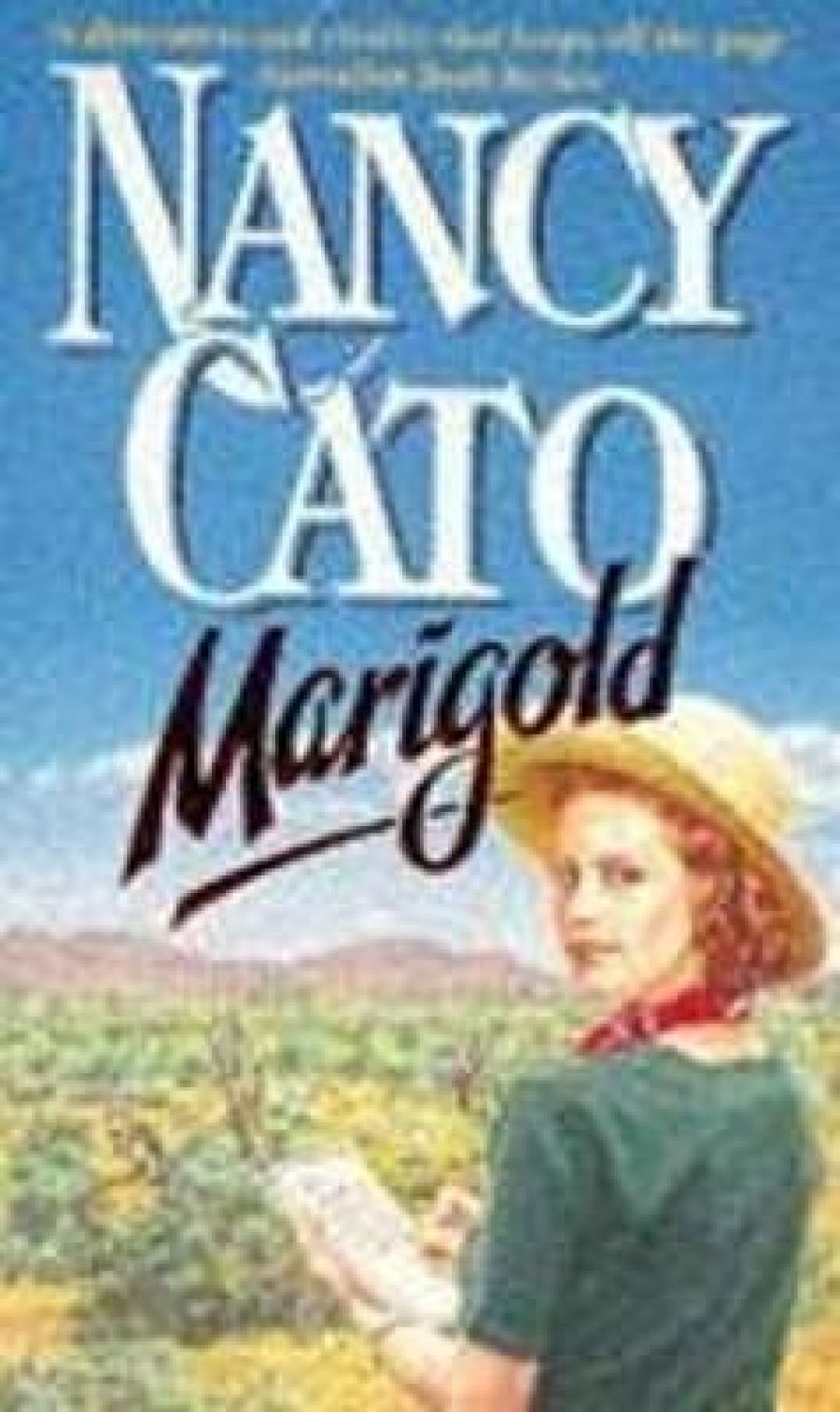
- Free Article: No
- Contents Category: Fiction
- Review Article: Yes
- Article Title: Reading for hope and change
- Article Subtitle: Two very different heroines represent the morality of their times
- Online Only: No
- Custom Highlight Text:
These two books could stand as period pieces for their times, reflecting rigid moral codes and the limited expectations of women. If we wonder how far we have come towards changing the narrowness of female existence, we have only to compare everything implicit in the expression of the societal mores as depicted here.
Nancy Cato’s Marigold is a swashbuckling heroine’s tale; Winsome Smith’s Rachel Weeping is a flatly stated realistic account of a heroine’s woe, with emphasis on realism. Cato’s book is written with an underlying sense of humour, while Smith’s is restrainedly serious.
- Book 1 Title: Marigold
- Book 1 Biblio: New English Library/Hodder & Stoughton, $29.95hb
- Book 2 Title: Rachel Weeping
- Book 2 Subtitle: Winsome Smith
- Book 2 Biblio: Bell Line Books, $12.95pb
Nancy Cato’s Marigold is a swashbuckling heroine’s tale; Winsome Smith’s Rachel Weeping is a flatly stated realistic account of a heroine’s woe, with emphasis on realism. Cato’s book is written with an underlying sense of humour, while Smith’s is restrainedly serious.
Marigold is narrated by a seventeen-year-old who works as a cadet reporter for the evening Standard in the Adelaide of the 1930s. Rachel Weeping is a diarised account of sixteen-year-old Jane, who is pregnant, and has been quickly ensconced at Palmyra, a Home for Unmarried Mothers in Sydney during the early 1950s.
As much as these books are poles apart in tone, style, and content, there is a similarity in that the heroines find reading and writing useful; for Jane it offers sustenance and a glimmer of hope; for Marigold it is a catalyst for change.
While at Palmyra Jane discovers the library that is ‘really just a bookcase in the corner’ containing ‘mostly old brown-covered volumes’, including Dickens. A lot of time is spent in this novel discussing and comparing the varying stages of pregnancy and there is also much agonising over whether to ‘keep the baby or not’. In contrast with Dickens’s stories of hard times, or The Diary of Anne Frank (to compare a work of the same form), the characters in Rachel Weeping remain flat and featureless, except for the different sizes and shapes of their bellies. Although the theme itself deserves empathy, I did not find it an ‘unforgettable experience’, as the back cover suggested I might. Bland prose lectures the reader on the evils of conformist attitudes and prejudice, rather than involve us in Jane’s experience. The sixteen-year-old’s speech is far too reasonable and pat – we know what she is saying is right, but we don’t feel it.
In contrast, Nancy Cato’s heroine, Marigold, is created with a directness and vitality that leaps off the page. Just as the heroine in All the Rivers Run rejects the confines of conventional society, so too does Marigold. She has a lively combination of intellectual zest and inherent ‘romanticism’ that, rather than impeding reality, sustains her survival instinct against the order of the day, which was the quick propelling of the female into committed boy/girl relationships and early marriage.
Early in the story, Marigold learns of the mating habits of flying ants, where the female bites off her own wings and crawls into a crack to lay her eggs and start the new colony, thereby destroying her own capacity to fly. She determines that she will protect her freedom to explore and soar. And so, ironically, we find the expectations of commitment and marriage come from Marigold’s lover, Sandy, while Marigold extricates herself from the trap of marriage and babies ‘against all (her) deepest feminine instincts’ and travels overseas for a different perspective.
Unlike Jane, Marigold has kept a part of herself intact and earned money to make a concrete choice. Her quite visual imagination and wide reading, (including Balzac’s Lost Illusions) often meant disillusionment when measured against daily life, but also made her tenaciously aware of the opportunities life can offer.
A weakness in Marigold is the chapter devoted to Marigold’s discovery of her father in the desert after many years of believing him to be dead. His fake suicide to cover his rejection of conventional city life, their meeting, and the justification for what he did, together with her forgiveness and happiness, lacks credibility. The ramifications of such a meeting would take some time to manifest, and if there was not space in the novel to devote to this it should perhaps have been left out. If the characterisation of the father is rather wooden and lacking in dimension, other characters certainly are not: the little nuisance of a sister, Celia, the nasty Dr Greeley, or Myfanwy Jones, the avant-garde Social Editress, who smokes cigarettes in a long holder and persists in writing copy in ‘large beautiful script’ rather than typing it.
These two books remind us that, although today many women have forged a place for themselves in the world outside the home, and although it is a more realistic option for a single mother to keep her baby, it would still seem very necessary for the female of the species to guard against her tendency to give her all.


Comments powered by CComment